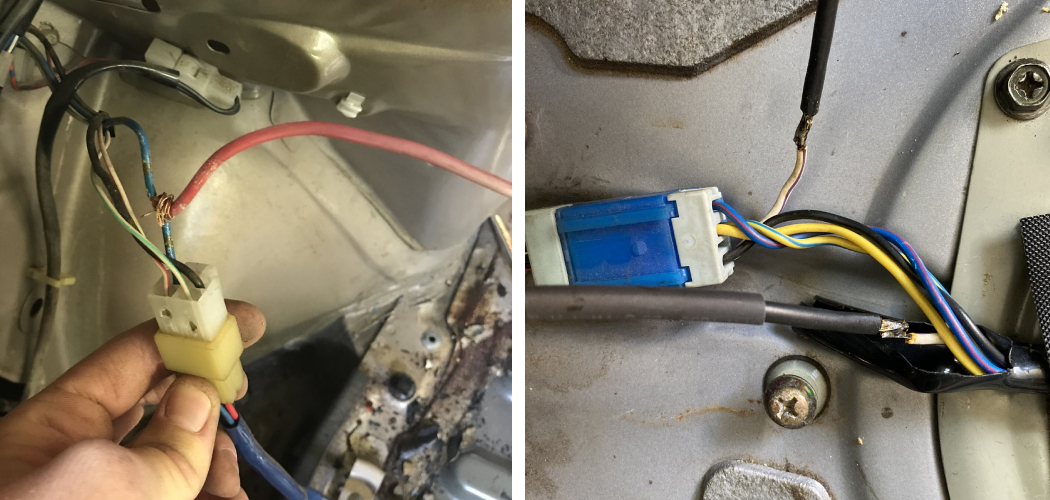In the realm of automotive enthusiasts and DIY mechanics, the quest for enhanced performance and efficiency often leads to innovative solutions. One such endeavor involves the direct connection of a vehicle’s fuel pump to the battery, a modification that enthusiasts believe can optimize fuel delivery and potentially boost engine performance.
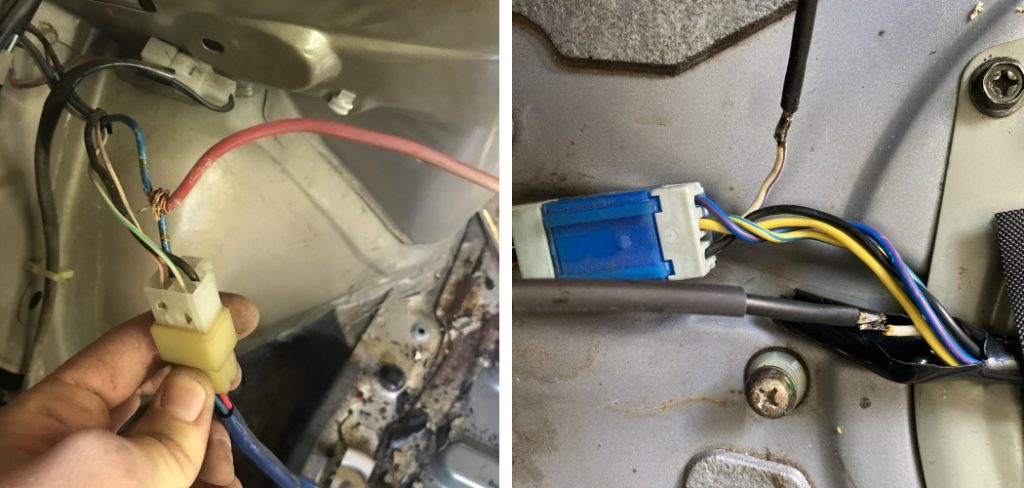
While this practice is not universally recommended and may void warranties, it has gained popularity among those seeking to fine-tune their vehicles for specific driving conditions. In this article, we will delve into how to run fuel pump direct to battery, exploring the potential benefits and risks associated with this modification.
From understanding the underlying mechanics to implementing the necessary wiring, we will guide readers through the process, providing insights into the considerations and precautions essential for a successful and safe execution of this automotive modification.
Whether motivated by a desire for increased horsepower or improved fuel efficiency, the journey of running a fuel pump direct to the battery unveils a fascinating intersection of technology and hands-on automotive expertise.
Importance of Fuel Pump Direct Connection
Grasping the intricacies of running a fuel pump directly to the battery is crucial for several reasons. Firstly, it enables car enthusiasts to exercise greater control over their vehicle’s fuel system, which is particularly beneficial in custom tuning situations that require precise fuel delivery.
Additionally, understanding this process could also contribute to more efficient troubleshooting, allowing for quicker resolution of fuel delivery problems which might otherwise lead to costly and time-consuming repairs.
However, it is essential to possess a comprehensive understanding of the vehicle’s electrical and fuel systems to avoid potential hazards such as electrical fires or damage to the vehicle’s electronics. This knowledge ensures that such modifications are done with the highest regard for safety and vehicle integrity.
Understanding the Fuel Pump System
Before attempting to modify the connection of a fuel pump to a battery, it is imperative to have a solid grasp of how the fuel pump system operates. At its core, the fuel pump’s role is to deliver a consistent supply of fuel from the tank to the engine, maintaining the necessary pressure for optimum combustion. Modern vehicles typically employ an electric fuel pump located within the fuel tank, which is controlled by the vehicle’s electronic control unit (ECU).
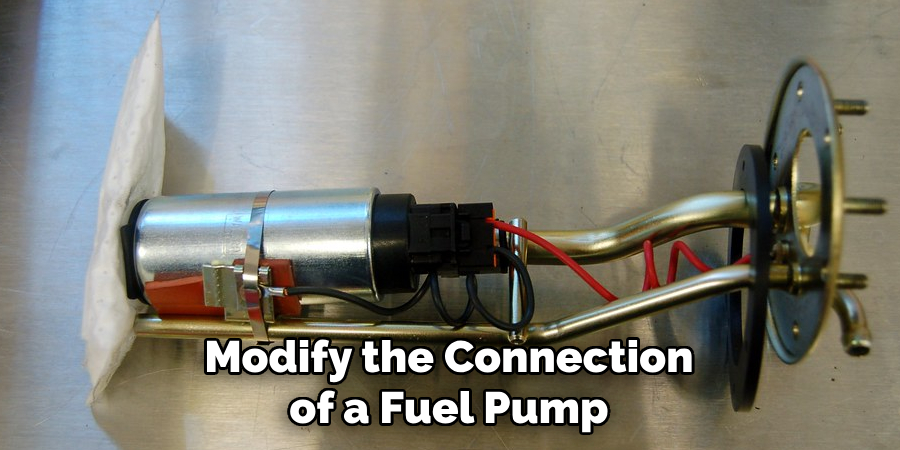
The ECU regulates the pump’s operation based on various engine demands, ensuring the correct amount of fuel is delivered under different driving conditions. A thorough understanding of this system is the foundation upon which safe and effective direct connections can be made, circumventing potential risks associated with tampering with the vehicle’s standard fuel delivery processes.
Components of the Fuel Pump System
When dissecting the fuel pump system, it becomes clear that it is comprised of several key components that work in harmony to transport fuel efficiently. The fuel tank acts as a reservoir for the fuel, while the fuel pump itself is responsible for pressurizing and sending fuel to the engine.
The fuel filter plays a critical role in purifying the fuel before it enters the engine, ensuring harmful contaminants are removed. Fuel injectors then precisely deliver the fuel into the combustion chamber.
Additionally, relays and fuses protect the electrical circuit of the pump from overcurrent and short circuits, and the fuel pressure regulator maintains the required pressure in the fuel rail, according to engine demands. Understanding each component’s role is vital for anyone looking to modify the system to run the fuel pump directly from the battery.
Common Issues with the Fuel Pump System
Despite the fuel pump system’s critical function in a vehicle’s performance, it is not immune to issues that can impair its operation. One prevalent problem is fuel pump failure, often manifested through symptoms such as sputtering engines, power losses, or the vehicle’s inability to start, indicating an interruption in fuel delivery.
Clogged fuel filters can also lead to reduced fuel flow, as contaminants and debris obstruct the path to the engine. Electrical problems, such as faulty relays or corroded wiring, may result in intermittent or no power reaching the pump.
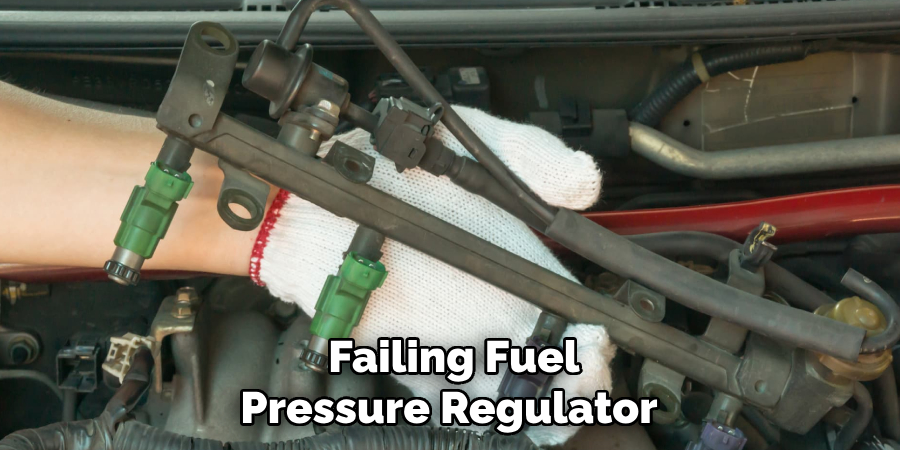
Lastly, worn out components within the fuel system, like a failing fuel pressure regulator or degraded fuel injectors, can disrupt precise fuel management. These issues not only affect driving performance but could also pose risks to vehicle safety, and thus regular maintenance and timely diagnosis are advisable to uphold the fuel pump system’s integrity.
Precautions and Safety Measures
When considering a direct battery connection for the fuel pump, safety must be the paramount concern. To prevent electrical hazards and damage to the vehicle, several precautions should be strictly followed. Firstly, disconnect the negative terminal of the battery before beginning any work to eliminate the risk of electrical shorts.
Use fuses and relays appropriate for the capacity of the fuel pump to protect against overcurrent situations. Ensure that all wires are of adequate gauge to handle the current without overheating and that connections are secure and waterproof to prevent failure due to exposure to the elements. It is also necessary to install an inertia switch to cut off power to the fuel pump in the event of a collision, a critical safety feature that factory setups typically include.
Always consult the vehicle’s service manual for specific electrical schematics and fuel system details to avoid incorrect modifications. After the modifications are complete, test the system thoroughly in a controlled environment before regular use. By taking these preventative steps, one can better ensure the safety and reliability of the modification.
10 Methods How to Run Fuel Pump Direct to Battery
1. Understand Your Vehicle’s Electrical System:
Before delving into modifications, it is crucial to have a comprehensive understanding of your vehicle’s electrical system. Familiarize yourself with the location of the fuel pump, the existing wiring, and the components related to fuel delivery. This foundational knowledge will guide you through the modification process and help prevent unintended consequences.
Additionally, having a basic understanding of electrical circuits and components such as fuses, relays, and switches will be beneficial. However, if you are unsure about any aspect of your vehicle’s electrical system, it is best to consult a professional mechanic.
2. Gather Necessary Tools and Materials:
Prepare a toolkit comprising wire strippers, crimping tools, electrical tape, soldering equipment, and the appropriate gauge wiring. It’s essential to use high-quality materials to ensure a reliable and safe electrical connection, minimizing the risk of electrical issues or malfunctions.

Toolkits are essential for any electrical project, and it’s important to have the right tools and materials before starting any work. Along with the aforementioned tools, you may also need a multimeter to test the connections and check for continuity. Additionally, keep spare fuses, connectors, and heat shrink tubing in your toolkit in case of emergencies or unexpected issues.
When choosing wires, make sure to select the appropriate gauge for your project. The gauge size indicates the diameter of the wire and determines its amperage carrying capacity. Using a wire with a smaller gauge than needed can result in overheating and potential fire hazards, while using a larger gauge than necessary is not cost-effective.
3. Disconnect the Battery:
Begin the modification process by disconnecting the vehicle’s battery. This ensures safety and prevents accidental short circuits during the wiring procedure. Always adhere to safety precautions and wear appropriate protective gear when working on the electrical components of a vehicle.
After disconnecting the battery, wait for at least 10-15 minutes before starting the modification process. This will allow any residual charge to dissipate and make it safer to handle the electrical components.
4. Locate the Fuel Pump Wiring:
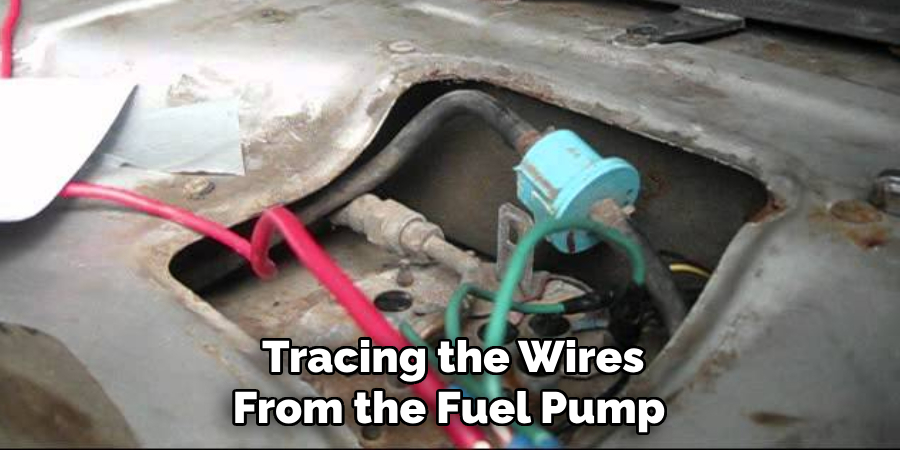
Identify the wiring associated with the fuel pump. This may involve consulting the vehicle’s wiring diagram or physically tracing the wires from the fuel pump to their connection points. Knowing the existing wiring configuration is crucial for integrating the fuel pump into a direct battery connection.
Once the fuel pump wiring has been located and identified, it is important to carefully inspect it for any damage or wear. Over time, wires can become corroded or frayed which can lead to electrical issues and potential safety hazards. If any damaged wiring is found, it should be replaced before proceeding with the installation process.
If you are not familiar with vehicle wiring or do not feel comfortable working with it, it is recommended to seek the assistance of a professional mechanic or electrician.
In addition to inspecting for damage, it is also important to ensure that the wiring is properly connected and secured. Loose connections can lead to poor performance or even failure of the fuel pump.
5. Choose the Right Wiring Gauge:
Selecting the appropriate gauge of wiring is paramount to ensure the safe and efficient transfer of electrical current. Consider the power requirements of the fuel pump and choose a wiring gauge that can handle the anticipated load without causing voltage drops or excessive heat buildup.
In general, the lower the gauge number, the thicker and more durable the wire will be. For most fuel pumps that draw between 5-10 amps, a 14-gauge wire is recommended. However, if you’re using a higher performance or larger fuel pump that draws more power, consider upgrading to a heavier gauge such as 12 or even 10.
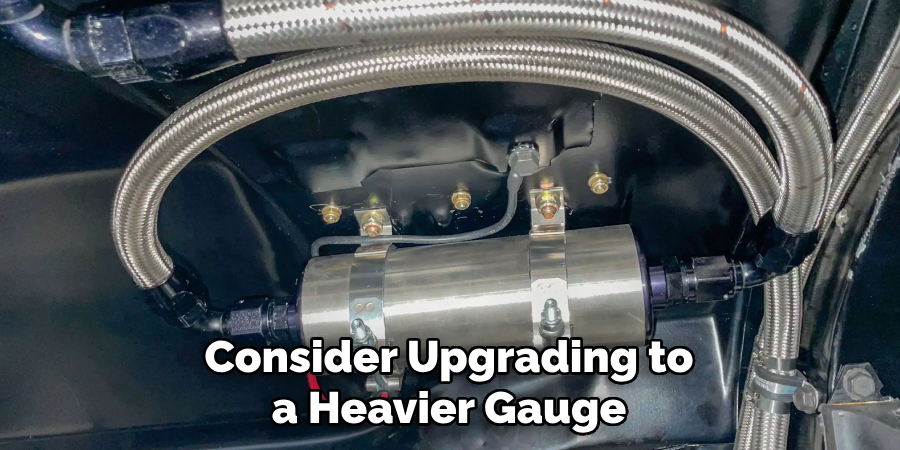
It’s also important to consider the length of the wiring needed. The longer the wiring, the more resistance it will have and therefore a thicker gauge may be necessary to prevent voltage drops. Additionally, if you plan on running multiple fuel pumps in parallel, be sure to factor in their combined power requirements when choosing a suitable wire gauge.
6. Install a Relay for Safety:
To enhance safety and prevent potential electrical issues, install a relay between the fuel pump and the battery. The relay acts as a switch, controlled by the vehicle’s ignition system, ensuring that the fuel pump only operates when the engine is running. This minimizes the risk of accidental fuel pump activation and conserves battery power.
Additionally, the relay prevents fuel from being pumped into an engine that is not running, reducing the risk of fire. While installing a relay may not be necessary for all vehicles, it is highly recommended as an added safety measure.
Relays are relatively inexpensive and can easily be found at most auto parts stores. The installation process typically involves connecting the relay to the vehicle’s ignition system and routing wiring to the fuel pump. It is important to follow the manufacturer’s instructions carefully and ensure that all connections are secure to prevent any potential issues.
In addition to installing a relay, it is also important to regularly check and replace the fuel pump as needed. Over time, wear and tear can cause the fuel pump to fail, leading to potential safety hazards. Regular maintenance can help prevent unexpected failures and ensure that your vehicle’s fuel system is functioning properly.
7. Soldering vs. Crimping Connections:
When making electrical connections, enthusiasts often debate between soldering and crimping. Evaluate the advantages and disadvantages of each method based on your skill level and the specific requirements of the modification. A well-executed connection is essential for reliability and safety.
Soldering and crimping are two popular methods for making electrical connections. Both have their own advantages and disadvantages, and it is important to understand the differences between the two before deciding which method to use. When making modifications to electrical systems, it is crucial to ensure that the connections are reliable and safe. In this section, we will discuss the pros and cons of soldering and crimping to help you make an informed decision.
8. Implement Proper Wire Routing:
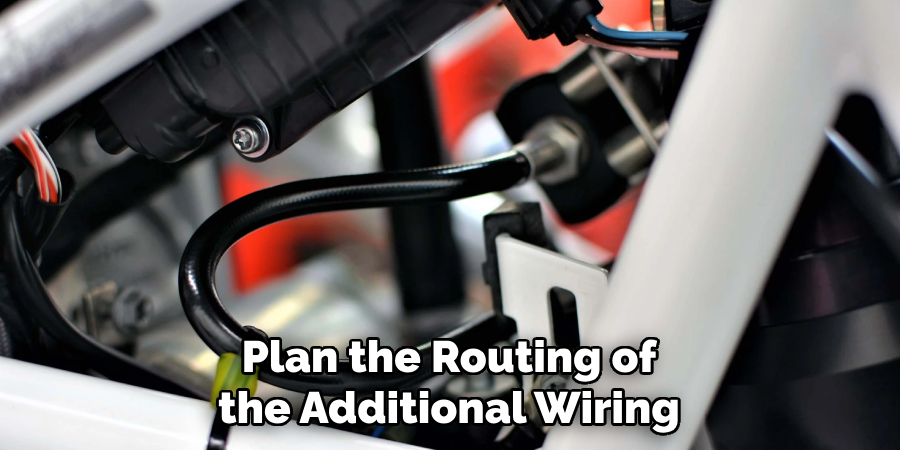
Carefully plan the routing of the additional wiring required for the modification. Avoid areas prone to heat, moving parts, or sharp edges that could potentially damage the wires. Secure the wiring in place using appropriate clips or ties, ensuring a tidy and organized installation. Proper routing of the wires not only improves the aesthetics of the modified vehicle but also reduces the risk of electrical issues that can arise from improper wire placement.
In addition to securing and organizing the wiring, it is important to consider any potential interference between wires. Keep high voltage and low voltage wires separate and avoid running them parallel to each other. This will minimize electromagnetic interference which can affect the performance of the electrical components.
Furthermore, make sure to leave enough slack in the wiring for any necessary adjustments or repairs in the future. This will also prevent strain on the wires, which can lead to damage or breakage over time.
9. Test the Modified System:
After completing the installation, conduct thorough testing to ensure the modified fuel pump system operates as intended. Check for proper voltage levels, verify that the fuel pump activates when the ignition is turned on, and assess the overall functionality of the modified setup. If any issues are detected, troubleshoot and resolve them before proceeding. When all tests are successfully completed, the modified fuel pump system is ready for use.
Although, regular maintenance checks and testing should be conducted to ensure the system continues to function properly. To extend the lifespan of the system, it is recommended to conduct maintenance checks at least once every six months. This will help identify any potential issues early on and prevent major problems from occurring in the future.
10. Monitor and Maintain:
Once the modification is successfully implemented, monitor the performance of the fuel pump system regularly. Keep an eye on fuel pressure, listen for unusual sounds, and promptly address any issues that may arise. Regular maintenance and attention to detail are essential for the long-term reliability of the modified setup. Additionally, keep track of any changes in fuel efficiency and adjust the modifications as necessary.
It is important to regularly monitor and maintain any modifications made to a vehicle’s fuel pump system. This ensures that the system continues to function properly and efficiently. By keeping an eye on fuel pressure and listening for any unusual sounds, potential issues can be detected early on and addressed before they become major problems.
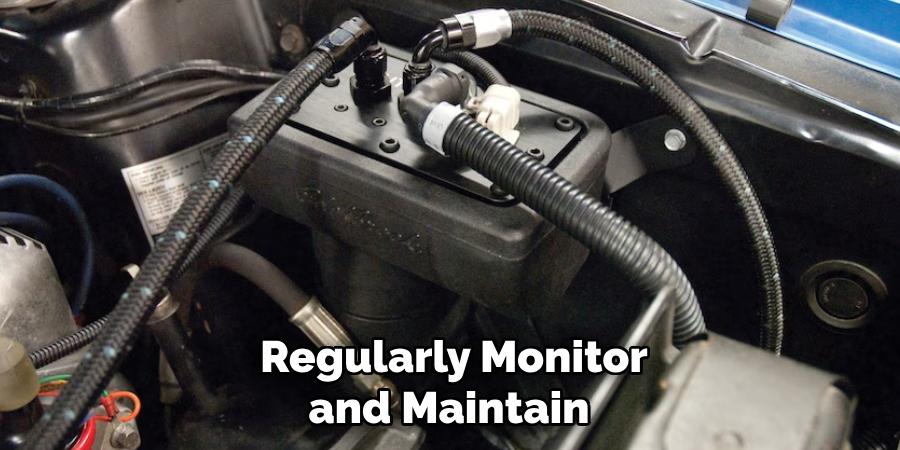
Regular maintenance is also crucial in maintaining the long-term reliability of a modified setup. This includes routine checks and replacements of parts, as well as cleaning and lubricating components as needed. By staying on top of maintenance, you can extend the lifespan of your fuel pump system and avoid expensive repairs down the line.
Conclusion
In conclusion, understanding how to run a fuel pump directly to the battery is a valuable skill for any vehicle owner or mechanic. This process allows for a direct power supply to the fuel pump, bypassing potential wiring issues or relay failures that may hinder its operation.
By following the outlined steps with caution and precision, individuals can troubleshoot fuel pump-related problems efficiently and ensure the smooth functioning of their vehicles. However, it’s imperative to emphasize the importance of safety precautions when working with electrical systems in vehicles.
Prioritize safety gear, disconnect the battery before any work, and proceed with vigilance to prevent accidents or damage. Hopefully, this article gave you some helpful tips about how to run fuel pump direct to battery successfully, so now that you have the proper knowledge on how to get the job done, why not give it a try today?

